Rehabilitation
What is Rehabilitation?
Rehabilitation is a vision that is widely concerned globally. Also, according to current information, 2.41 billion people worldwide live with circumstances that influence their activity in daily routine and would help from rehabilitation services, which correlates to 1 in 3 people demanding rehabilitation assistance throughout their condition or damage.
The ratio of worldwide people over 60 will be duplicated in the next 30 years, and the prevalence of whom will live with chronic diseases, particularly non-communicable diseases. These altering health and demographic movements are donating to immediate global growth in the number of people participating in a reduction in daily functioning, resulting in massive and unmet rehabilitation essentials. Much of these unmet necessities are focused on the neediest and weak people in low and middle-income countries and conflict-affected settings, which are usually ill-equipped to manage these enriching essentials for rehabilitation assistance.
According to the World Health Organisation, rehabilitation is one of the important features of Universal Health Coverage (UHC), which features alongside the “promotion of adequate health, precluding of diseases, therapy, and palliative care”. Therefore, rehabilitation concentrates on executing functional independence in movements of daily living (ADL), and participation in work, amusement, and education, with people being capable to perform significant functions in daily life. Rehabilitation is key to gaining not only personal health benefits but a general universal fitness purpose that allows the construction of a healthy and applicable global population.
What is the Definition of rehabilitation?
Rehabilitation is established on the ideology that every person has the innate direction and right to be a specialist in their health care profession. This observes the difference between acute care and rehabilitation, where acute care is interested in a patient’s survival, while rehabilitation is interested in the instruction and training of patients to be capable to bring out movements of daily routines by themselves, hence encouraging self-care and active freedom. In spite of this, there is presently no adaptable definition/understanding of rehabilitation, and it is displayed in many manners relying on the context, involving an evolution problem, disability problem, health problem, human rights problem, substance abuse problem, and security problem, to name a few.
- Rehabilitation is one of the essential fitness techniques of the WHO, along with the upgrade, deterence, therapy, and relaxing care. World Health Organization(WHO) describes rehabilitation as
- A class of phases that aid patients who undergo, or are possible to undergo, disability to reach and provision maximal functional activity in interaction with their circumstances.
Rehabilitation is a comprehensive process that focuses on assisting individuals in recovering, adapting, or optimizing their physical, mental, and social abilities. It involves a multidisciplinary approach that combines medical, therapeutic, and supportive interventions. Health situations can guide to acute or chronic disease, damage, or concussion, which can also contain other occurrences such as aging, stress, pregnancy, inborn anomaly, or congenital predisposition.
Anyone with a health illness who undergoes some condition of boundary in active functioning, such as flexibility, eyesight, or awareness, may require rehabilitation. As such rehabilitation is sufficiently illustrated via the usage of the biopsychosocial model via the usage of interventions that handle impairments, movement restrictions, and participation limitations, regarding contextual elements both individual and environmental, involving assistive technology that affects active functioning.
Rehabilitation should be noticed as an important therapy presented across all levels of the health care procedure. Many individuals without long-period impairments will must rehabilitation assistance at some moment in their lives. Also, many individuals with long-period impairments don’t regularly require rehabilitation programs, for example, an individual with a spinal cord injury(SCI) may require intensive rehabilitation in the months following their initial SCI, but once they have obtained sufficient cure to perform to their highest abilities and have been equipped with the assistive gadgets they require to facilitate them to resume to perform well in their residents and home background, then they may not require to access more additional rehabilitation. Some individuals with long-period impairments can even require periodical rehabilitation, for example, individuals with depression/degenerative illnesses.
Rehabilitation is a profitable patient-centered health approach where the cure serves the following health illnesses and the aims and intentions of the user. Information on functioning is essential to conclusion producing in rehabilitation at all levels of the health plan since the purpose of rehabilitation is to optimize functioning in rays of impairments, injuries, and acute/chronic illnesses:
At the user level, information on functioning principles purpose setting, and product assessment across the sequence of rehabilitation care (primary, secondary, and tertiary), and in the therapy stages, for example, acute care, post-acute care, and long-term care.
At the program level, reports on functioning from users can be aggregated to support monitoring clinical effects and enhance service planning and quality guarantee.
At the guidelines level, compiled clinical facts on functioning provide guideline-makers a basis of proof for arranging fitness and rehabilitation and observing their effect.
Rehabilitation happens across the life period, from infants to end-of-life, and can happen before a health state (preventative ‘prehabilitation’, promotive), in acute care, and post-acute to long-period care and rehabilitation sessions are supplied by multiple health and non-health specialists, as well as people, their relatives. By correcting, controlling, or delaying degeneration in sensorial, physical, intellectual, mental, cognitive, or social, rehabilitation puts the person in the middle of the procedure and it permits individuals in gaining their full possibility and facilitates participation in civilization. Its effect isn’t just on the people, but also on their relatives, residents, and economies.
Some examples of rehabilitation include:
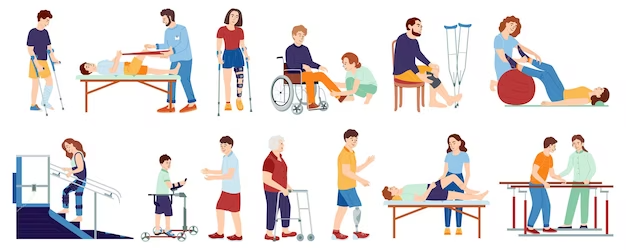
- speech activity to enhance communication of person after brain damage;
- physical activity to enhance muscle power, voluntary activities, and balance in individuals with stroke or Parkinson’s disease;
- altering an elder person’s home atmosphere to enhance their safeness and freedom at home and to decrease their chance of falls;
- apprising a patient with heart illness on how to exercise safely;
- readying a patient with an amputation to be capable to operate a prosthetic and making, fitting, and refitting the prosthesis;
- positioning and splinting methods to help with skin recovery, decrease swelling, and recover activity after burn surgery;
- prescribing medication to decrease spasticity for a juvenile with cerebral palsy;
- psychological treatments for an individual with vibrant despair undergoing a spinal cord injury;
- Sociable skills activity for patients with schizophrenia, autism spectrum disorders/disorders of intellectual disability.
- instructing a patient with eyesight loss in the usage of a white club; and
- performing with a person in intensive supervision to enhance their breathing, control complications, and quicken their recuperation after crucial sickness
What are the Principles of Rehabilitation?
Principles supervise the discharge of rehabilitation consideration. These principles direct the rehabilitation expert in designing the program of care for the patients experiencing rehabilitation. Even, rehabilitation principles must be comprehended by all rehabilitation team members to acquire seductive effects in the procedure of rehabilitation. The ensuing principles direct rehabilitation;
Promote Adaptation
The challenges that attend impairments and defeat of work are frequently overwhelming for the patient and constantly contain physical, social, and emotional challenges. Because of this, to acquire preferred outcomes in rehabilitation, there needs to be a comprehension of the overall person’s illness. This understanding needs to be directed to help, boost and construct strength and resourcefulness. It is also necessary for rehabilitation practitioners to comprehend that complete recuperation may not continuously be the end purpose for rehabilitation for many patients, but instead to maximize work. Thus, they need to know that rehabilitation is beneficial for people to adjust to challenging health illnesses and not only “retrieve” from them. The term “retrieve,” usually gets misunderstood by the person as various from what a health expert may plan. Thus, the usage of “adaptation” may construct more natural guidance to the patients to allow them to manage and assemble adjustments to alterations, which have happened underlying a health illness and significant diseases that concern producing lifelong modifications.
Definitely, a decrease in movement, restrictions, and a gain in social participation and reintegration happens with rehabilitation, however, making a feeling of adaptation in the patient raises their level of self-confidence and enhances their acceptance of their self-image and adjustment to roles underlying health challenges.
Emphasise Abilities
Rehabilitation accentuates an encouraging mindset for people who have experienced various health challenges established in life-altering situations. Thus, rehabilitation concentrates not on what is lost but on what can be rescued and acquired via mutual aim-setting by the rehabilitation expert and the person.
Treat the Whole Person
A basic principle in rehabilitation is a holistic method of therapy. It has to be terminated at all duration that a person is being regaled and not the illness. This indicates that person’s preferences, background, culture, religious beliefs, social support, physical capabilities, developmental phases, and psychology need to be regarded as methods of care being designed by the rehabilitation team members.
Time
The effect of duration on rehabilitation has been widely explored from the best duration to initiate rehabilitation to the duration essential for rehabilitation to gain the most significant advantages. Considerably time is essential in rehabilitation. Earlier beginning of rehabilitation can decrease the chance of readmission for specific illnesses for example chronic obstructive pulmonary diseases (COPD), and enhance motor activity in spinal cord injury (SCI) and stroke.
Educate
Rehabilitation isn’t a magical cure, and instruction is an important element of the rehabilitation approach during all phases that provide the person and their reinforcement structures have a useful understanding of what is proceeding, placed natural expectations, and establish SMART purposes. Education of the person in rehabilitation helps that individual to accept responsibility for their health, encourages patient-centered care, and facilitates the most significant level of independence in movements and involvement in rehabilitation programs.
People Centred Care
A technique to care that intentionally assumes people, guardians, relatives, and societies’ viewpoints as participants in and beneficiaries of trusted health strategies that are arranged close to the comprehensive requirements of people instead of particular illnesses and respect social importance. People-centered care even needs that patients have the education and asset they must make conclusions and participate in their supervision and that guardians can gain maximal work within a supportive working atmosphere. People-centered care is more comprehensive than patient and person-centered supervision, containing not only clinical meetings but even watch to the fitness of people in their residents and their important part in shaping health policy and health assistance.
What are the elements of rehabilitation?
Dietz defined four aspects of rehabilitation for patients with cancer, which have now been operated on and involved across rehabilitation for a wide range of conditions: preventive, restorative, supportive, and palliative:
Preventative Rehabilitation
Happens soon after a new diagnosis/onset of new impairments. The purpose is to deliver instruction, guidance, and interventions to control/delay the beginning of other impairments and preserve the ability level of patients. This is a typical format of rehabilitation in long-period illnesses, for example, Cancer, Chronic Obstructive Pulmonary Disease (COPD), Diabetes, and many neurological conditions. It even underpins sustained self-management and can contain interventions aspired at defending part for as long as doable.
Restorative Rehabilitation
Restorative rehabilitation centralizes interventions that enhance impairments for example muscle power and respiratory function and mental impairment to reach maximal recuperation of procedure. This is a typical format of rehabilitation after surgery, illness, or acute events for example major trauma/a stroke to maximize role.
Supportive Rehabilitation
Supportive rehabilitation improves the self-care ability of patients and flexibility by utilizing approaches, for example, supplying self-help appliances and instructing patients on compensatory techniques and alternative manners of accomplishing things. This may contain the requirement for assistive tools or environmental adaptations. This is occasionally guided to as adaptive rehabilitation.
Palliative Rehabilitation
Palliative rehabilitation helps patients with life-limiting conditions to lead a high quality of life physically, psychologically, and socially while respecting their wishes. It often focuses on relieving symptoms, such as pain, dyspnoea, and edema, preventing contractures, breathing assistance, psychological well-being, relaxation, or the use of assistive devices, to maximize functional independence and reinforcement comfort, satisfaction, and quality of life.
What are the Goals of rehabilitation?
Rehabilitation goals include:
- Prevention of the loss of function
- Slowing the rate of loss of function
- Improvement or restoration of function
- Compensation for loss of function (compensatory strategies)
- Maintenance of current function
Rehabilitation Outcomes
Rehabilitation outcomes are the advantages and modifications in the functioning of a patient over a duration that is attributable to a single effort/set of criteria. There is even convincing proof that rehabilitation benefits can even supply long-period cost deductions and add value and equivalency across the health care procedure. They may contain:
- Deterence and Deduction in Need for Health Care
- Integration of out-of-hospital care, so the length of stay and unplanned admissions can be reduced
- Fewer Hospital Admissions or Readmissions
- Decreased Length of Stay
- Increased independence
- Increased self-management of the condition
- The decreased burden of care
- Return to a role/occupation that is age, gender, and context-relevant (e.g. home care, school, work)
- Improved quality of life
What is Good Rehabilitation?
- Concentrates on good results that are formed by the patient we regale and operated by their aims
- Centers on people’s needs, not their diagnosis
- Aims high and includes vocational outcomes
- It is an active and stimulating method– not passive care
- Relies on interdisciplinary team working
- Responds to changes in people’s needs
- Integrates specialist and generalist services
- Requires leadership for transformational change
- Gives hope
What are the Range and Scope of Rehabilitation?
Rehabilitation conceals an immense range of track patients. It contains support to understand essential communication skills; training lessons to enhance or sustain optimum level health, well-being, and profession; and complicated neurological rehabilitation following severe trauma/stroke. Rehabilitation may be suitable at any age depending upon the patient’s need for modification during the duration of their life. Such as, they may need assets to:
- Acquire New Skills – Children may need assets to acquire skills to overwhelm obstacles raised by developmental problems and health illnesses to gain optimum fitness and independence.
- Sustain Skills and Independence – for progressive illnesses, for example, dementia, motor neuron disease, and terminal cancer, early diagnosis, assessment, and rehabilitation intervention can assist patients to retain their skills and freedom for as long as doable.
- Enhance Performance – Rehabilitation will help to improve performance in athletes and sports people after any injury or time away from the sport.
- Rescue from Surprising Conditions– For example, depression, anxiety, psychosis, acute admission to hospital following a stroke, surgery, a fall, chest infections, and cardiac events.
- Handle Long-period Illness– When patients with a chronic/long-period illness evolved suddenly sick/worsening, they aid in rehabilitation sessions to assist them recover/maximize their freedom in ADLs.
- Self-manage Conditions – People with a chronic or long-term condition are enabled to manage their health and reduce the risk of developing secondary complications affecting either their mental or physical health, for example, the defeat of strength and cardiovascular fitness, contractures, pressure ulcers, pain, anxiety, and depression.
- Permit Advocacy – People who are weak and require support, for example, those with mental impairment and communication difficulties are suggested advocacy as a portion of their rehabilitation sessions.
What are the Methods and Techniques of rehabilitation?
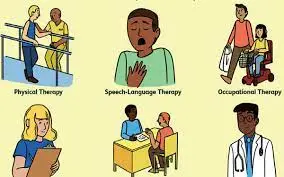
Physiotherapy
Physiotherapy utilizes natural transformation mechanisms of the body to especially regale illnesses of physical functions. Some of the therapies they deliver contain:
- Manual therapy
- Physiotherapeutic movement therapy
- Physical therapy (cryotherapy, ultrasound therapy, thermotherapy, electrotherapy)
- Hydrotherapy
- Myofascial instrumental therapy
- Proprioceptive re-education
- Structural osteopathy
- Taping
- Massages (classic and reflective)
Occupational Therapy
Occupational Therapy goals at training/re-training activities and capabilities that haven’t been designed or have been lost via an illness/trauma. It concentrates on improving patient’s independence in day-to-day movements via:
- Exercising daily activities (ADLs), for example, personal hygiene, dressing, meals, housework, etc.
- Rehabilitation of the upper extremities. Focusing on various motor and sensitive components, for example, strength, coordination, endurance, dexterity, sensitivity, and proprioception.
- Consultation in reinforcement tools and technical aids to enhance the quality of life at home.
Thalassotherapy (Hydrotherapy with seawater)
Simple baths, contrast baths, and hydro kinesiotherapy physical exercises in the aquatic environment take advantage of the thermal and mechanical properties of seawater. This therapy can be executed in groups or separately with a therapy assistant. The goal is to strengthen muscles and enhance body image perception, motor coordination, and balance.
Heliotherapy (Light Therapy – Sun Exposure)
Light Therapy and particularly sun exposure is a well-prominent and adequate remedy for Psoriasis. By revealing the involved skin to sunlight, the development of the skin cells is delayed which can result in improved skin formation.
Our sun terrace, which is exclusively for Psoriasis patients, has been formed in a manner that delivers maximum privacy. It allows our patients to experience comfort during regaling their involved skin with sunlight. It is very essential for sun exposure to occur slowly and to remember to involve adequate sunscreen in the areas of skin which aren’t impacted by Psoriasis to avoid sunburn.
Speech Therapy
Speech therapists follow the purpose of maintaining and restoring the communicative capabilities and the food input of patients.
Our speech therapist will evaluate your capabilities and design a therapy plan. Training with our speech therapist enables patients to enhance their speech, voice, and swallowing. Patients will learn training that can be rehearsed at home.
Therapy in a Multi-Sensory Environment – Snoezelen
This multi-sensory therapy room based on the Snoezelen conception delivers various methods of therapy.
Snoezelen suggests sitting/lying comfortably in a relaxing, pleasantly warm room appreciating lighting outcomes, enveloped by soft sounds and melodies. Snoezelen is utilized to enhance sensory perception and relaxation.
The Snoezelen room can be saturated with fragrant perfumes, which can revive beautiful memories and animate dreaming. This pleasant atmosphere stimulates easier communication between the patient and the physiotherapist and enables them to concentrate on precise aims. The goal is also to construct adjusted manners and to enhance the autonomy and quality of life for the patient.
Intensive Rehabilitation of Bipedalism, Balance, and Gait
Intensive physical and functional training; if needed with the usage of belts to decrease body weight. The goal is to increase the intralesional musculature and re-educate gait training in patients with spinal cord injury (SCI), obtained brain injury, or other illnesses.
Intensive Stretching
Stretching exercises are specifically appropriate for muscle immobility and spasticity, it decreases the chance of damage and can assist to control the shortening of muscles.
Wheelchair Training – Technique and Fitness
This group activity will enhance the skills and techniques of wheelchair users. They prepare inside and outside the clinic, to learn how to operate and overcome barriers that can be seen at home, in parks, shops, or other daily routine procedures. The therapist will deliver tips and advice to increase confidence and independence for wheelchair users. These sessions also include fitness exercises and stretching to help keep fit and build strength.
Seasonal Group Classes and Activities
The team of therapists has a broad background in education and occupation. Every season they deliver special lessons where their patients can learn new skills which enable them to maintain their minds and bodies engaged.
In history, these contained:
- MediYoga
- Meditation
- Creative Crafting
- Afrodance
Health Education
We host routine discussions, talks, and conferences kept by their health professionals. These deliver a possibility for their patients to comprehend more about illnesses, obtain advice, and share incidents. Those instructive and social occasions enable patients to remain corrected and deliver new wisdom.
What are the Benefits of Rehabilitation?
Rehabilitation can relieve the effect of a wide range of health illnesses, involving acute or chronic illnesses, or damages. It completes other health interventions, for example, medical and surgical interventions, assisting to encourage healing and acquiring the finest output achievable. Rehabilitation may aid to control, decreasing, or managing difficulties associated with many health illnesses, for example, in the context of spinal cord injury (SCI), stroke, or fractures.
Rehabilitation aids to underrate or delay the disabling consequences of chronic health illnesses, for example, cardiovascular disease, cancer, and diabetes by providing patients with self-management methods and the assistive outcomes they demand, or by managing pain or other difficulties. As such, it donates to healthful aging.
Rehabilitation is an acquisition, with expense advantages for both the people and the community. It may help to avoid expensive hospitalization, decrease hospital time of stay, and control re-admissions. As rehabilitation even facilitates people to engage in or return to work and job, or to stay separated at home, it underestimates the demand for economic or guardian assets.
Rehabilitation is an essential part of the versatile health range and is a fundamental method for acquiring Sustainable Development Goal 3 – “Provide healthy lives and encourage well-being for all at all generations”.
The Rehabilitation approach includes six main dimensions of emphasis:
- Controlling, identifying, and handling comorbid sicknesses and medical complications.
- Training for maximum independence.
- Promoting the greatest psychosocial coping and transformation by patient and relative.
- Controlling secondary disability by encouraging society reintegration, containing the continuation of residence, relative, recreational, and vocational training.
- Improving the quality of life provided residual disability.
- Preventing recurrent conditions.
- Physical Benefits
- Increase Physical Capacity
- Reduces Pain
- Strengthens muscles
- Improves balance
- Reduces risk of falls
- Improves coordination
- Improves flexibility and joint mobility
- Decreases swelling in the impacted joints and muscles
- Prevents deformities and limb problems
- Improves gait
- Improves posture
- Reduction of unnecessary complications
Psychological Benefits
- Improves self-confidence and ability to deal psychologically with sickness/damage.
- Delivers you with greater independence – returns you to your pre-injury condition of cognitive well-being.
Lifestyle Benefits
- Improved Participation
- Decreased dependence
- Improved quality of life
- Faster return to work can decrease financial problems and improve social participation
- Reinforces return to sport/exercise so your fitness and your understanding of wellbeing can help– you also enhance your general fitness when you can exercise/play sport to your original abilities
Economic Benefits
There are several manners rehabilitation intervention can provide protection within the health and social care context. Such as, it can:
- facilitate a patient to return to work, get into work/stay in work decrease the expense of nursing, residential, and social care
- decrease the chance of falls
- decrease the associated expenses of cognitive health sickness
- reduce the costs associated with diabetic care
- reduce length-of-stay costs
What are the Types of rehabilitation?
Orthopaedic and Musculoskeletal Rehabilitation
- Knee pain
It is a restorative method of healing, the aim of which is to restore musculoskeletal constraints and relieve pain from trauma, sickness, or surgery.
- The physical therapist makes a personalized therapy schedule according to the requirement, purposes, and capabilities of the patient. Physiotherapists utilize a combination of approaches to assist muscles and joint function to enhance, sustain, or rehabilitate physical power, awareness, and flexibility with optimum outcomes. Many of the studies concluded that both aerobic and strengthening training, patient and group training is adequate in patients with knee osteoarthritis (OA).
Neurological Rehabilitation
- Some of the typical situations, for example, Spinal Cord Injury (SCI), Stroke, Multiple Sclerosis (MS), and Parkinson’s disease may contribute to differing degrees of e.g. spasticity, muscle defect, poor coordination, and balance, and problem in speech and swallowing. Individuals with a neurological sickness can show great potential for recuperation in both the early and late stages of rehabilitation pursuing injury. Enhancement of the recuperation method could be acquired with new rehabilitation techniques alone/ in combination with pharmacological intervention. For example, rehabilitation of activity after a stroke needs replicated practice and applies learning and brain modifications. Brain stimulus plays an important part in regaling stroke patients.
- If a patient is having problems with actions of daily routines, rehabilitation can help them in designing methods to execute the same tasks in various manners/through the usage of assistive technology. Physical therapy and occupational therapy can assist patients to enhance their movements of daily routine as well as their flexibility.
- Functional approaches and assistive instruments may reduce the load of dressing, bathing, eating, household chores, and daily care. Vestibular rehabilitation tries to support patients adjust to balance issues. Some tools have been developed to enhance stability. Assistive gadgets, bars, and security exercises can decrease the chance of falling. Overall, exercise can enhance health and function and sustain function for those with medium to severe impairment.
Cardiac Rehabilitation
- Cardiac rehabilitation is a complicated intervention delivered to patients with cardiovascular illness or pursuing a myocardial infarction (MI), which contains elements of health instruction, suggestions on risk decline, physical activity, and stress management. These programs are developed to determine the physiological and psychological outcomes of cardiac sickness, decrease the risk of impulsive death or re-infarction, management of cardiac signs, stabilize or reverse the atherosclerotic method, and improve the psychosocial and vocational situation of patients. Cardiac rehabilitation decreases mortality, morbidity, and unexpected hospital admissions in reserve to progress in exercise ability, quality of life, and psychological well-being are rising. In addition to these advantages, upper limb exercises and teaching breathing methods are contained in most rehabilitation schedules and decrease dyspnoea.
Pulmonary Rehabilitation
- Pulmonary rehabilitation is an exhaustive intervention established on a detailed patient examination observed by patient-custom treatments that contain, but aren’t determined to, exercise training, education, and behavior change, developed to enhance the physical and psychological state of patients with chronic respiratory illness and to facilitate the long-period observation to health-enhancing manners.
- Pulmonary rehabilitation is tailored to a patient who has just had an exacerbation, to optimize their respiratory procedure and hence their quality of life and participation in their daily routine. It has been established to especially enhance health-related quality of life and exercise capability in patients with Chronic Respiratory Pulmonary Disorder (COPD) corresponded to regular care. Investigations indicate it is beneficial in patients with medium to intense COPD. Improved functional exercise capability and improved quality of life of patients with COPD have demonstrated the advantages of pulmonary rehabilitation.
Geriatric Rehabilitation
- Aging is indicated by a decrease in general physiologic function and this causes chronic illnesses and multi-morbidity overall among elder adults. This element among others pushes healing a difficult one among elder adults, thus, comprehending the principles of rehabilitation will promote the delivery of useful restorative effects to elder adults.
- Even though no part of physical exercise can control the natural aging procedure, there is proof that everyday exercise can minimize the physiological outcomes of an otherwise inactive lifestyle and improve active life expectancy by altering the growth and progression of chronic disease and disabling illnesses. There is even appearing proof of meaningful psychological and mental advantages accruing from everyday exercise participation by elder adults. Routine physical exercise can decrease the chance of chronic illness and raise life expectancy and productivity progress in muscle roles for example strength and power. Multi-modal exercise has a documented useful impact on fall rates. A randomized control trial indicates that home-based exercise and nutrition methods have a praising effect on the defect score and physical performance in pre-frail/frail elder adults.
Renal Rehabilitation
- Renal rehabilitation in both pre-dialysis and dialysis persons with chronic kidney illness has been established to sustain and in many patients enhance activity toleration and significantly enhance the quality of life connected to physical activity, even though there is no proof presently that exercise therapy enhances the vital prognosis/renal effect. Intradialytic exercise protocols had positive effects on chronic kidney disease individuals with the insufficient cardiopulmonary procedure and decreased exercise tolerance and ventilatory efficiency. For patients with chronic kidney disease Stages 3 and 4 a 12-week/24-session renal rehabilitation exercise schedule has been established to enhance physical capability and quality of life, even though more extended follow-up is required to resolve if these conclusions will decode into reduced mortality rates.
- Secondary sarcopenia because of chronic kidney disease is associated with osteoporosis, malnutrition, mobility limitations, and raised fall chances. Managed physical therapy for the managing of secondary sarcopenia in patients with chronic kidney disease has been indicated to enhance the quality of life via improved cardiovascular health and bone power through strengthening exercises.
Burns Rehabilitation
- Burns rehabilitation has been indicated to have many positive outcomes. Virtual facts via the usage of a 3D interface video game, Xbox Kinect enhanced exercise time and personal satisfaction in patients who were under negligible upper limb burns. Robotics in the form of robot-assisted gait activity in persons who have severe burn injuries has been indicated to enhance their gait.
- Music therapy has been established to extremely reduce pain, anxiety, and muscle stress associated with sessions of burn cure, while mental behavioral treatment and hypnotism have even been indicated to decrease pain and anxiety levels in people who have undergone burn injuries.
What are Misconceptions about rehabilitation?
Rehabilitation isn’t just for individuals with disabilities, long-period, and physical impairments. Instead, rehabilitation is a necessary health service for anyone with an acute/chronic health illness/impairment/injury that determines to work, and as such should be open for anyone who requires it.
Rehabilitation isn’t a superfluity health service that is obtainable only to those who can afford it. Nor is it voluntary assistance to try only when other methods to control or heal a health illness fail.
For the full extent of the social, economic, and health advantages of rehabilitation to be recognized, timely, increased-quality, and reasonable rehabilitation interventions should be open for all. In people, this means initiating rehabilitation as soon as a health circumstance is reported and persisting to give rehabilitation alongside other health methods.
Conclusion
Rehabilitation is an important element of fitness that is gaol at improving work and independence. As a domain of health, it has developed via various stages before reaching its current model which contains various elements of biological, societal, and contextual aspects that have impacts on the health and function of people undergoing different health problems.
However of who the inheritor is, who provides it, or the condition in which rehabilitation is equipped, optimizing function is the supreme purpose of rehabilitation and is instrumental to a patient’s well-being, regardless of the following health condition. By restoring, controlling, or delaying deterioration in functioning (sensorial, physical, intellectual, mental, cognitive, or social), rehabilitation puts the patient at the base and contributes to people achieving their full potential and participating in the community. Its effect is therefore not only on the people, but also on their relatives, societies, and economies.
FAQ
What are the 5 stages of rehabilitation?
Stages of Rehabilitation
Phase 1 – Managing Pain and Swelling.
Phase 2 – Enhance Range of Motion and Flexibility.
Phase 3 – Enhance Strength and Start Proprioception and Balance Training.
Phase 4 – Proprioception and Balance Training and Sport-Specific Training.
Phase 5 – Incremental Recovery to Full Activity.
Is physiotherapy rehabilitation?
It can be described as correcting the situation of good health, and capability to work, the same whereas physiotherapy is a kind of rehabilitation that can be contained in the rehab procedure to support in retrieving the body power. Rehabilitation is a wide representation that physiotherapy even includes.
What are the Characteristics of Rehabilitation?
A relaxed and comfortable atmosphere.
Customized therapy schedules.
Cognitive health therapy.
Expert staff.
Detox schedule.
Aftercare schedule.
Concentrate on life after rehabilitation.
When should rehabilitation start?
Rehabilitation must initiate as earlier as conceivable after an injury and complete the continuum with other therapeutic sessions. It can even begin before/immediately after surgery when damage needs a surgical process.
What are the 3 goals of rehabilitation?
Rehabilitation is the method of curing a person with a mental/physical obsession. It contains both medical and psychological therapies. The 3 goals of rehabilitation schedules are temperance, enhanced functioning, and degeneration prevention.

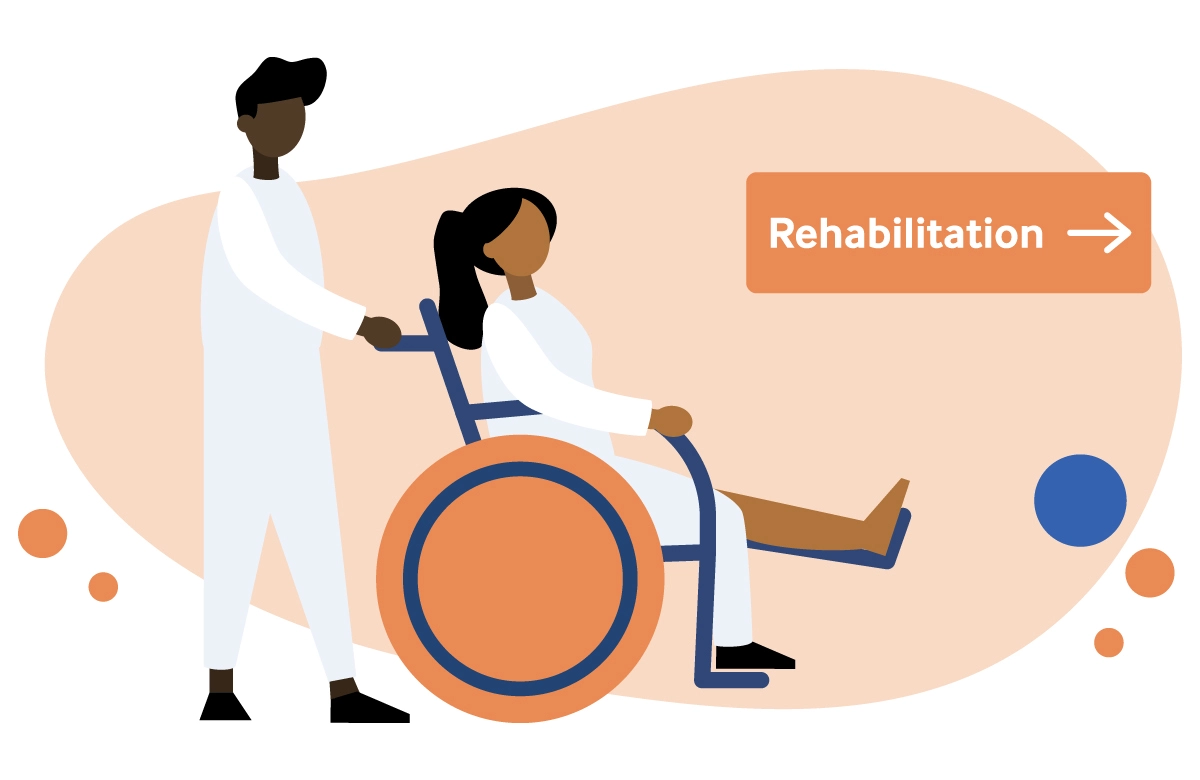
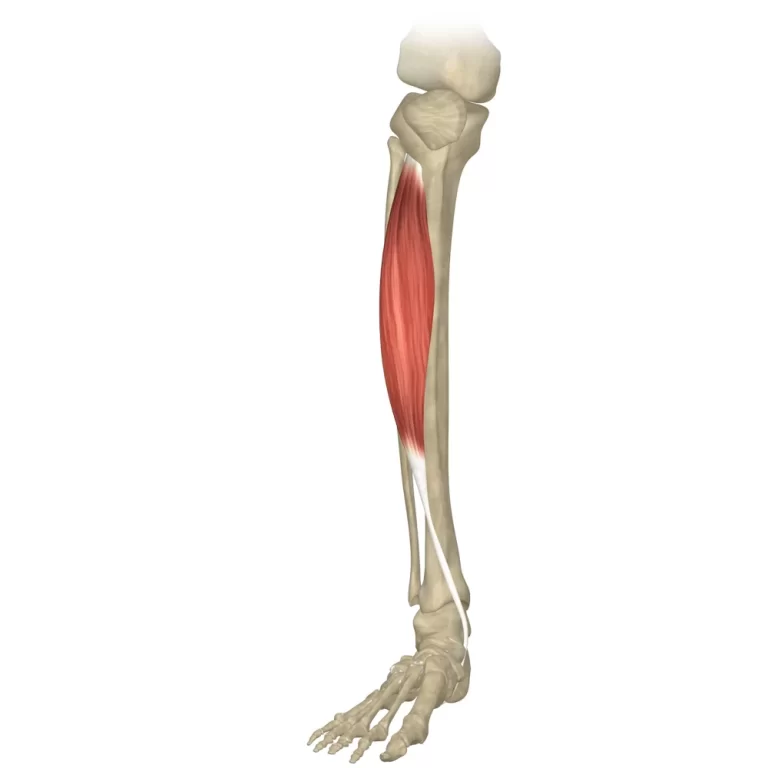
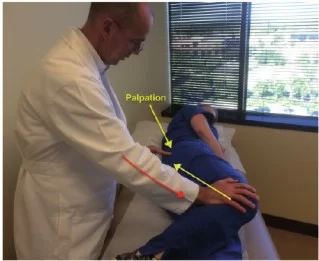



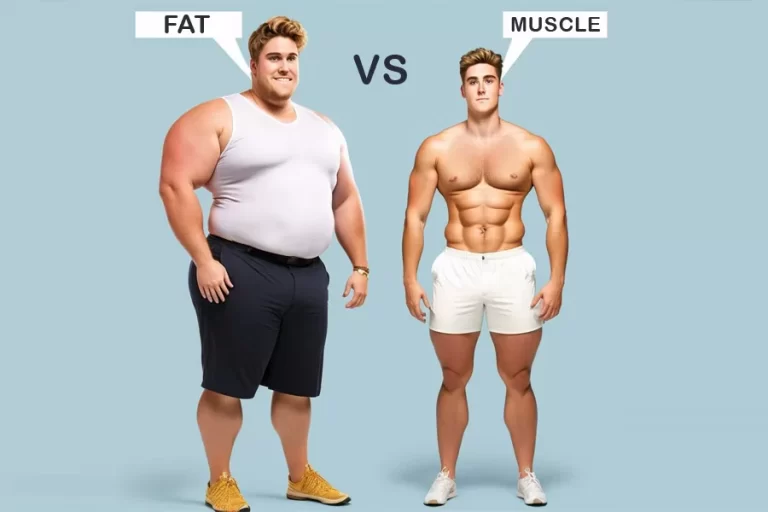
52 Comments